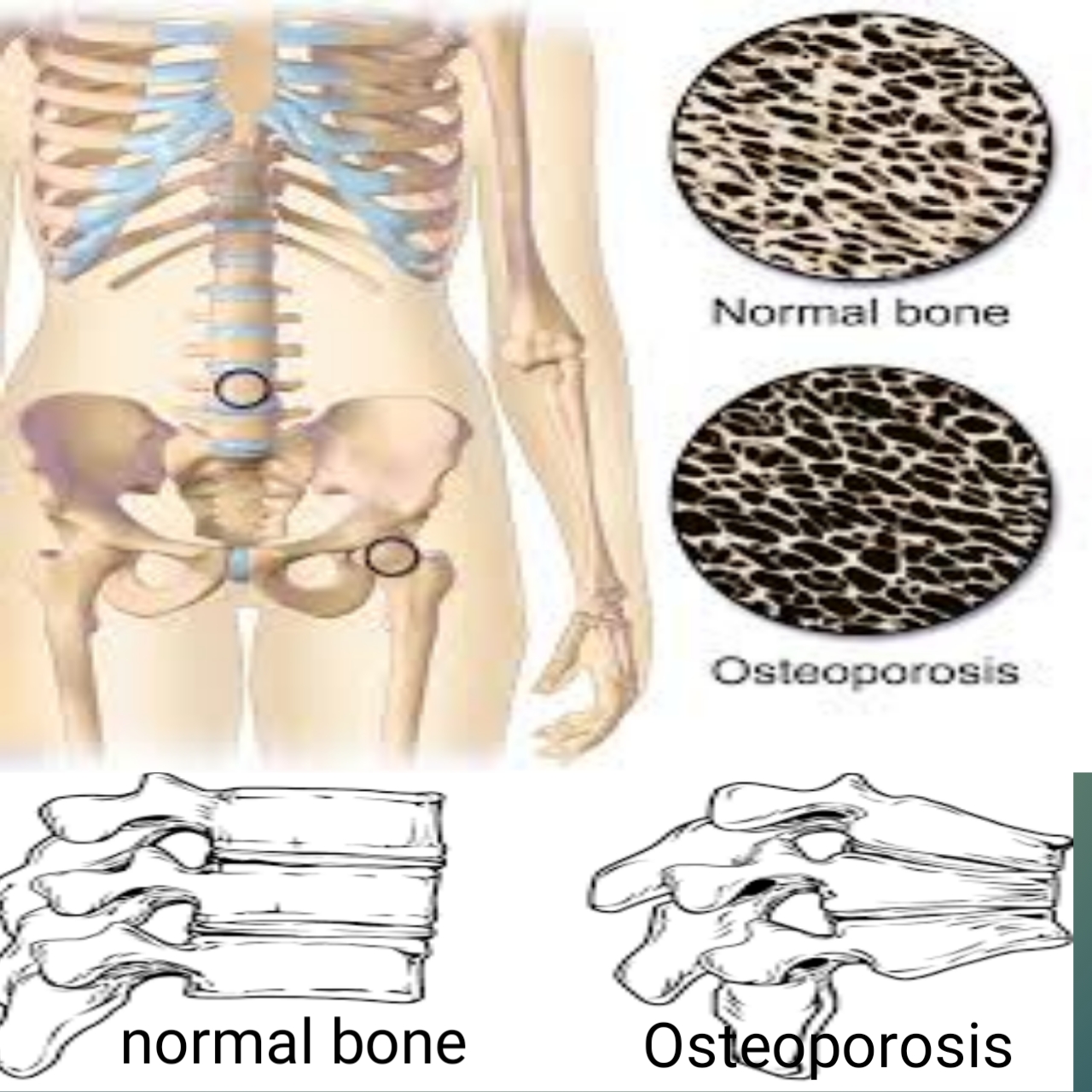Osteoporosis Now Easily Treatment
Osteoporosis is a chronic disease in which the mineral content of bones is progressively reduced, causing the bones to become brittle and break easily. It is associated with more than 1 million fractures of the hip, spine and other bones each year. The vertebral bones in the spine shrink and fracture, leading to a deformed spine. Bones in the wrist are also common fractures. Some 25 million Americans are affected by osteoporosis, of which 80% are postmenopausal women. Although postmenopausal white and Asian women are most at risk, men and women of all ages and ethnicities may be affected.
Although bones may look stiff, they are made up of living cells that need calcium and vitamin D (necessary for optimal absorption of calcium) to grow and stay strong. Almost all the calcium stores of the body are located in bone. During growth and development, bones usually receive more calcium than they are released. By age 25, when bone density peaks, the calcium absorption level stops; At the age of 30, the bone formation process is over. This is when bone mass maintenance and calcium are particularly important. If blood levels of calcium fall, the body withdraws its need from its bones. Adequate intake of calcium prevents bones from the effects of calcium deficiency which can accelerate osteoporosis.
Calcium is not the only factor associated with bone loss. Estrogen deficiency during menopause triggers bone loss by up to 1% per year. By the time a woman is 80, she can lose 30% to 40% of her bone mass. When there is an excess of bone mass, bone fractures also cannot decrease. Just bending and lifting 25 pounds - heavy groceries can cause injury. During menopause, hormone-replacement therapy in the form of estrogen supplementation is recommended to many women as protection against osteoporosis.
Because nicotine is believed to reduce blood levels of estrogen, smoking also contributes to bone loss. Smokers undergo menopause at least 2 years before. Genetics may also play a role in osteoporosis. Researchers have identified an osteoporosis gene that determines how vitamin D facilitates calcium absorption. People who have the gene are more resistant to absorbing available calcium. Caffeine and alcohol have also been implicated in bone loss. A recent study found that women who drank two or more cups of caffeinated coffee a day and did not drink any milk had a significant loss of bone density after menopause. The effects of caffeine can be negated by the consumption of milk. In the same study, coffee drinkers drank at least one glass of milk per day, with 6.5% higher bone density than the group alone.
Treatment of osteoporosis
The National Osteoporosis Foundation recommends several simple steps to reduce the risk of contracting the disease. First of all, eat sufficient amount of calcium from food. If this does not work, calcium supplementation is recommended. The Foundation suggests 1500 mg, which is twice the amount offered in RDA. 25 Second, consume enough vitamin D (400 IU) to allow absorption of calcium. Third, consider hormone-replacement therapy (estrogen) and discuss its use with your physician, especially if there is a family history of osteoporosis. And fourth, participating in weight loss activities, such as walking, running, and weight training, to prevent bone loss. In one study, women who participated in a one-year exercise program and received a daily dose of estrogen experienced a 7% increase in bone density and performed better than women on estrogen alone. Physical exercise forces bones to adapt to the stress placed on them, and they tend to overgrow in response. Atrophy of bones when unstable.
People with osteoporosis should exercise and do exercise, but choose the type of physical activity and intensity of exercise carefully. Tremendous contractions of muscles and high-impact movements should be avoided as they can stress the bones beyond their rupture. Swimming, water aerobics, stationary cycling, walking, and light weight training are good starting activities for people with osteoporosis.







